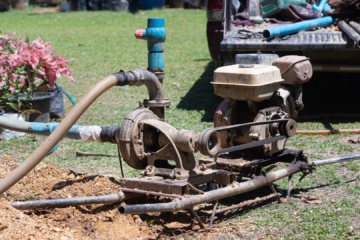Termites are a sneaky bunch: they can destroy a home without you even noticing. They’re also surprisingly hard to get rid of. In fact, some homeowners sit idly by as their houses are eaten from the inside out, as is the case with these three families, whose homes were destroyed by termites over a period of years.
Some homeowners also laugh when they hear the term “termite inspection,” but it’s not a laughing matter: they could be hiding in your walls right now. Many people think that termites are not that big of a deal, but these tiny bugs can cause big problems. If you have termites in your house, you have to get rid of them right away.
Though you may be tempted to ignore the infestation, termites can damage your home in ways you don’t even notice. Wood may be deteriorating as you read this, and you may not know how much you rely on it until it is too late, meaning residential restoration services will need to be called in to sort out the aftermath. We’ve put together a few easy steps to keep your home free of these destructive pests.
Now, the problem is that people don’t know where to start looking for termites. They can be hidden anywhere. Termites need three main things in order to survive: food, moisture, and shelter. If you find just one of these three conditions in your house, you can bet that there are termites present.
We will look into different types of termites so that you can identify which one you have eating away from your home.
Let’s start:
- Subterranean termites are most commonly found underground since that’s where they like to live. They like softwood fiber the most.
- Drywood termites do not require contact with the soil like subterranean termites and are therefore harder to detect. Since they are also more destructive, it is important to find them as soon as you can.
- Dampwood termites like wood with a fairly quite high level of moisture, and it is like the drywood termites; they both don’t require contact with soil. You can find these in decaying wood or dead trees, and they can also be found in buildings that have water leaks.
- Formosan termites are the most destructive type, and they can grow very large and can make a whole nest in a place that retains water.
After you have identified what type of termite you have, you can start looking for appropriate solutions. One important point to remember is that when you have had an infestation of termites or other wood-destroying insects, it would also be advisable to have the place tested for mold. The same applies the other way around. Keep an eye out for wood-destroying insects like termites if you have mold. In most cases, the sooner you discover mold or wood-destroying insects and contact Water Damage Restoration Services in your vicinity, the less damage and cost you may incur.
Talking about possible solutions, to keep termites out of your home, it is vitally important to avoid moisture and materials that they can feed on. Common problem materials include landscape timbers, railroad ties, and fence posts. In addition, avoid using these woods in decks, porches, and patios, as well as in furniture that’s near the house. While it’s true that there are termiticides that can prevent termites from infesting wood, it’s also true that older homes have a higher chance of having wooden components that are infested. Furthermore, newer homes may have wood with hidden damage that may not be readily visible to the naked eye. Likewise, if you have a basement and have noticed you have an infestation of Subterranean termites, then you might want to consider consulting either some foundation crack repair companies or a basement repair specialist. These termites might be coming from the outside into your space through small cracks and so getting some advice on this might be useful for you.
So be careful with your wood. Remember to not stack firewood against your home and leave tree trumps just lying on the grass of your backyard.
Aside from that, termites require a lot of water to retain moisture within their bodies and survive. They get their water from leaking showers, bathtubs, and plumbing. Water running through leaking pipes and collecting on the floor provides ideal conditions for the termites to feed and survive. As a result, if you have previously experienced termite damage in your home, you should address it as soon as possible so that it does not become a breeding ground for them yet again. You may look for plumbing service Lynchburg or elsewhere right away to fix the leaking shower or pipes.
If you don’t want to handle the situation yourself, you can also hire a professional exterminator. Not only will the exterminator know exactly how to get rid of termites, but the exterminator will also know how to make sure that the termites don’t come back.
All you’ll have to do is to follow the exterminator’s advice. The exterminator will probably tell you to make sure your home is made of non-wood products that termites can’t eat and that everything inside your home is stored in airtight containers. Homes that are made entirely of non-wood products and that have everything inside airtight containers are almost never affected by termites, so you just really need to listen carefully to what your exterminator is saying.
Lastly, make sure that you also have a regular inspection, and although it can be a bit pricy, it is worth the money. This will make the possibility of termites ever coming back to 0%. So, remember to call your trusted exterminator to go check your home once in a while.



0 Comments